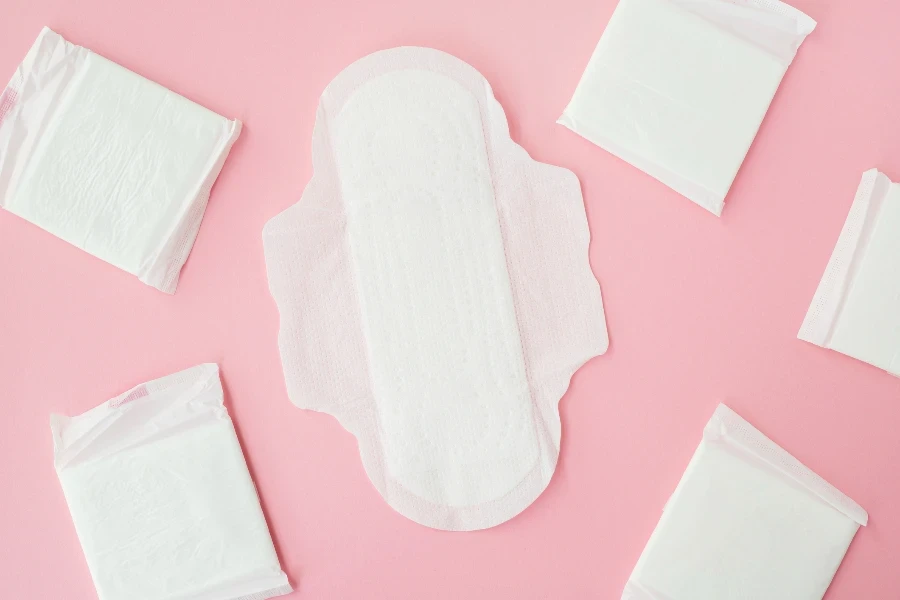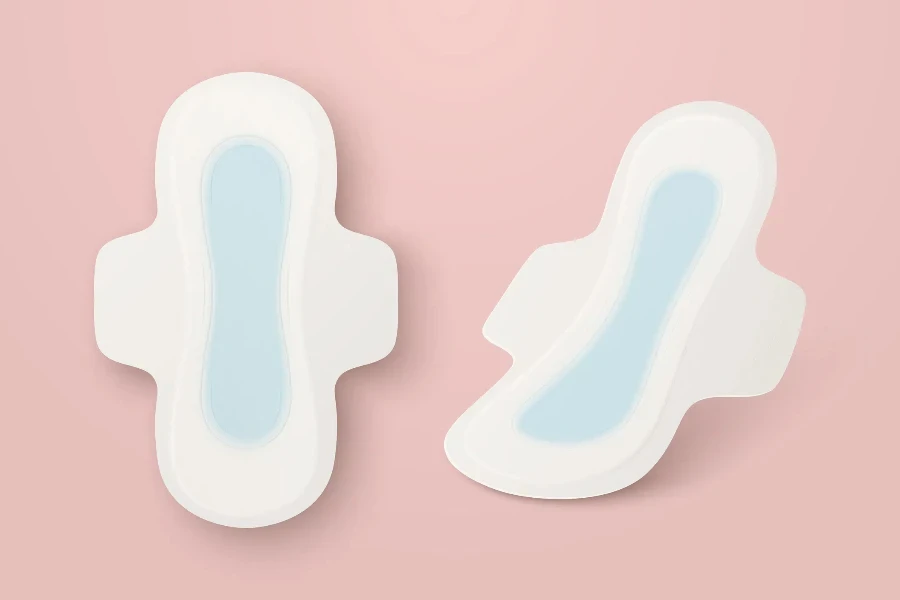Sanitary napkins, also known as menstrual pads, have become an indispensable part of feminine hygiene. Over the years, the market for sanitary napkins has evolved significantly, driven by increasing awareness about menstrual health, technological advancements, and changing consumer preferences. This article delves into the current market trends, innovative materials and technologies, and the future outlook for sanitary napkins.
Table of Contents:
– Market Overview: The Growing Demand for Sanitary Napkins
– Innovative Materials and Technologies in Sanitary Napkins
– Consumer Preferences Shaping the Sanitary Napkin Market
– The Future of Sanitary Napkins: Emerging Trends and Predictions
– Wrapping Up: Key Takeaways and Future Outlook
Market Overview: The Growing Demand for Sanitary Napkins

Rising Awareness and Health Consciousness
The global sanitary napkin market has witnessed substantial growth, primarily driven by increasing awareness about menstrual health and hygiene. According to a report by Research and Markets, the global sanitary napkin market reached a value of approximately USD 24.38 billion in 2022 and is projected to grow at a CAGR of 5.6% between 2023 and 2028, reaching nearly USD 41.93 billion by 2032. This growth is attributed to the rising health consciousness among women and the efforts of governments and NGOs to promote menstrual hygiene, especially in developing countries.
Technological Advancements and Product Innovations
Technological advancements have played a crucial role in the evolution of sanitary napkins. Innovations such as super-absorbent fibre technology, thinner and more discreet designs, and the introduction of organic and chemical-free products have significantly enhanced the comfort and effectiveness of sanitary napkins. These advancements have not only improved the user experience but also expanded the market by catering to diverse consumer needs. For instance, the development of overnight pads with advanced leakage protection and antibacterial layers has addressed the concerns of women who experience heavy menstrual flow.
Regional Market Dynamics
The demand for sanitary napkins varies significantly across different regions. Asia, particularly countries like India and China, represents a significant growth opportunity due to the large female population and increasing awareness about menstrual hygiene. According to a report by Research and Markets, Asia is expected to create substantial opportunities for the sanitary napkin market during the forecast period. In India, for example, nearly 80% to 90% of rural women still use cloth during menstruation, leading to health issues such as vaginal infections. Government initiatives and awareness campaigns are crucial in driving the adoption of sanitary napkins in these regions.
In contrast, North America and Europe have a more mature market, with a high penetration rate of sanitary napkins. These regions accounted for more than 33% of the global market in 2021. The demand in these regions is driven by high per capita income levels and increased health consciousness among consumers. The focus here is on premium and eco-friendly products, reflecting the growing consumer preference for sustainable and organic options.
In summary, the global sanitary napkin market is poised for robust growth, driven by rising awareness, technological advancements, and regional market dynamics. The increasing demand for health-conscious and eco-friendly products, coupled with innovative product designs, is expected to shape the future of the sanitary napkin market.
Innovative Materials and Technologies in Sanitary Napkins: A New Era of Comfort and Sustainability

The sanitary napkin market is undergoing a significant transformation, driven by advancements in materials and technologies. These innovations are not only enhancing the comfort and effectiveness of sanitary napkins but also addressing growing environmental concerns. This section delves into the rise of organic and natural materials, advanced absorbency technologies, and the emergence of eco-friendly and biodegradable options.
The Rise of Organic and Natural Materials
In recent years, there has been a notable shift towards the use of organic and natural materials in sanitary napkins. This trend is largely driven by increased consumer awareness about the potential health risks associated with synthetic materials and chemicals. Organic cotton, bamboo, and other natural fibers are becoming popular choices for sanitary napkin manufacturers. These materials are not only hypoallergenic and gentle on the skin but also sustainable and biodegradable.
According to a professional report, the demand for organic and natural sanitary napkins is expected to grow significantly in the coming years. This growth is fueled by the increasing number of health-conscious consumers who are willing to pay a premium for products that are free from harmful chemicals and environmentally friendly. Brands that embrace this trend are likely to gain a competitive edge in the market.
Advanced Absorbency Technologies for Better Comfort
The development of advanced absorbency technologies has revolutionized the sanitary napkin industry. These technologies are designed to provide superior comfort and protection, addressing common issues such as leakage and discomfort. Superabsorbent polymers (SAPs) are one such innovation that has significantly improved the absorbency of sanitary napkins. SAPs can absorb and retain large amounts of liquid, keeping the surface dry and comfortable.
Another notable advancement is the use of micro-perforated top sheets, which enhance breathability and reduce the risk of skin irritation. These top sheets allow air to circulate while preventing liquid from seeping through, ensuring a dry and comfortable experience. Additionally, some brands are incorporating odor-neutralizing agents into their products, providing added confidence and freshness.
Eco-Friendly and Biodegradable Options
As environmental concerns continue to rise, the demand for eco-friendly and biodegradable sanitary napkins is growing. Traditional sanitary napkins, which are made from non-biodegradable materials, contribute significantly to plastic waste. In response, manufacturers are developing products that are not only effective but also environmentally responsible.
Biodegradable sanitary napkins are made from materials such as organic cotton, bamboo, and biodegradable polymers. These products break down naturally over time, reducing their impact on the environment. Some brands are also exploring innovative packaging solutions, such as compostable wrappers and recyclable boxes, to further minimize their ecological footprint.
Consumer Preferences Shaping the Sanitary Napkin Market: Health-Conscious Choices and Digital Influence

Consumer preferences are playing a crucial role in shaping the sanitary napkin market. Increased awareness about health and wellness, the desire for customization and personalization, and the influence of social media and online reviews are driving significant changes in the industry.
Increased Awareness and Demand for Health-Conscious Products
Today’s consumers are more informed and health-conscious than ever before. They are increasingly seeking products that are safe, natural, and free from harmful chemicals. This shift in consumer behavior is evident in the growing demand for organic and natural sanitary napkins. According to a report by a leading market research firm, a significant percentage of new mothers experience lasting health issues after childbirth, including pelvic pain, anxiety, and depression. This has led to a heightened awareness of the importance of using safe and gentle products during the postpartum period.
Brands that prioritize transparency and provide detailed information about their product ingredients and manufacturing processes are likely to build trust and loyalty among consumers. Additionally, offering products that cater to specific health needs, such as hypoallergenic and dermatologically tested sanitary napkins, can further enhance consumer satisfaction.
Customization and Personalization Trends
Customization and personalization are becoming increasingly important in the sanitary napkin market. Consumers are looking for products that cater to their unique needs and preferences. This trend is driving the development of customizable sanitary napkins that offer different levels of absorbency, sizes, and features.
Subscription services are also gaining popularity, allowing consumers to receive personalized sanitary napkin packages delivered to their doorstep. These services often include options for customizing the frequency and quantity of deliveries, as well as the ability to choose from a range of products. This level of convenience and personalization is highly appealing to modern consumers who value tailored solutions.
The Influence of Social Media and Online Reviews
Social media and online reviews have a significant impact on consumer purchasing decisions. Platforms such as Instagram, YouTube, and TikTok are popular channels for sharing product reviews, recommendations, and personal experiences. Influencers and bloggers play a crucial role in shaping consumer perceptions and driving brand awareness.
Brands that actively engage with their audience on social media and encourage user-generated content can benefit from increased visibility and credibility. Positive online reviews and testimonials can also boost consumer confidence and influence purchasing decisions. As a result, many brands are investing in digital marketing strategies and collaborations with influencers to reach a wider audience and build a strong online presence.
The Future of Sanitary Napkins: Emerging Trends and Predictions

The future of sanitary napkins is set to be shaped by several emerging trends and innovations. From integrating technology for better health monitoring to exploring new business models and expanding into global markets, the industry is poised for significant growth and transformation.
Smart Sanitary Napkins: Integrating Technology for Better Health Monitoring
The integration of technology into sanitary napkins is an exciting development that holds great potential for improving women’s health. Smart sanitary napkins equipped with sensors can monitor various health parameters, such as menstrual flow, pH levels, and temperature. This data can be transmitted to a smartphone app, providing users with valuable insights into their menstrual health and helping them track their cycles more accurately.
These smart products can also alert users to potential health issues, such as infections or irregularities, enabling early intervention and treatment. As technology continues to advance, the possibilities for smart sanitary napkins are vast, and they are likely to become an integral part of women’s health management.
Subscription Services and Direct-to-Consumer Models
Subscription services and direct-to-consumer (DTC) models are gaining traction in the sanitary napkin market. These business models offer several advantages, including convenience, cost savings, and personalized experiences. Subscription services allow consumers to receive regular deliveries of sanitary napkins, eliminating the need for last-minute trips to the store. They also provide an opportunity for brands to build long-term relationships with their customers and gather valuable data on their preferences and usage patterns.
DTC models, on the other hand, enable brands to sell directly to consumers through their websites or online platforms. This approach allows for greater control over the customer experience, from product selection to packaging and delivery. It also provides an opportunity for brands to offer exclusive products and promotions, further enhancing customer loyalty.
Global Market Expansion and Opportunities
The global sanitary napkin market is expanding rapidly, with significant growth opportunities in emerging markets. According to a report by a leading market research firm, the demand for sanitary napkins is expected to rise in regions such as Asia-Pacific, Latin America, and Africa. Factors driving this growth include increasing awareness about menstrual hygiene, rising disposable incomes, and government initiatives to improve access to sanitary products.
Brands that invest in market research and tailor their products to meet the specific needs and preferences of consumers in these regions are likely to succeed. Additionally, partnerships with local organizations and NGOs can help raise awareness and promote the adoption of sanitary napkins, further driving market growth.
Wrapping Up: Key Takeaways and Future Outlook

The sanitary napkin market is undergoing a dynamic transformation, driven by innovative materials, advanced technologies, and evolving consumer preferences. The rise of organic and natural materials, advanced absorbency technologies, and eco-friendly options are enhancing the comfort and sustainability of sanitary napkins. Consumer preferences for health-conscious products, customization, and the influence of social media are shaping the market landscape. Looking ahead, the integration of technology, the growth of subscription services, and global market expansion present exciting opportunities for the industry. As brands continue to innovate and adapt to changing consumer needs, the future of sanitary napkins looks promising and full of potential.





 Afrikaans
Afrikaans አማርኛ
አማርኛ العربية
العربية বাংলা
বাংলা Nederlands
Nederlands English
English Français
Français Deutsch
Deutsch हिन्दी
हिन्दी Bahasa Indonesia
Bahasa Indonesia Italiano
Italiano 日本語
日本語 한국어
한국어 Bahasa Melayu
Bahasa Melayu മലയാളം
മലയാളം پښتو
پښتو فارسی
فارسی Polski
Polski Português
Português Русский
Русский Español
Español Kiswahili
Kiswahili ไทย
ไทย Türkçe
Türkçe اردو
اردو Tiếng Việt
Tiếng Việt isiXhosa
isiXhosa Zulu
Zulu